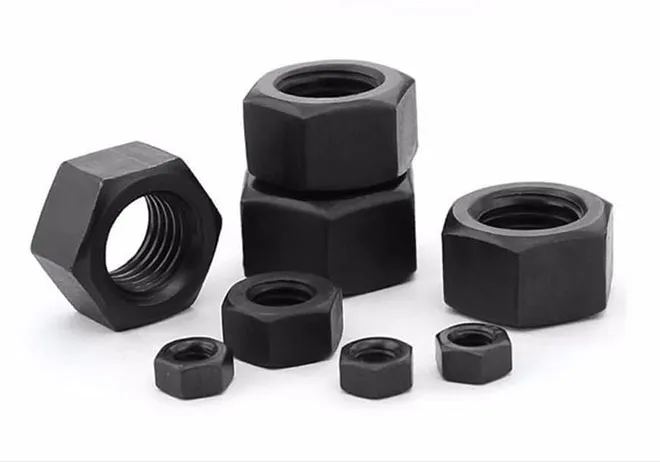Production of Button Head Socket Cap Screws from a Reliable Manufacturer
Abe . 05, 2024 19:37 Back to list
Production of Button Head Socket Cap Screws from a Reliable Manufacturer
Understanding Button Head Socket Cap Screws A Comprehensive Overview of Their Manufacturing
Button head socket cap screws are integral components in modern engineering and manufacturing, providing the strength and reliability needed in a myriad of applications. These fasteners feature a rounded head and a hexagonal socket, designed to be driven by an internal wrenching drive, making them particularly useful in tight spaces. But what goes into the manufacturing of these versatile screws, and why are they favored in various industries?
The Anatomy of Button Head Socket Cap Screws
Before delving into the manufacturing process, it’s essential to understand the structure of button head socket cap screws. Their unique design consists of a dome-shaped head and a cylindrical shaft, with threads that extend along the length of the screw. The head's rounded shape helps distribute stress over a larger area, reducing the risk of material failure, while the hex socket enables effective torque application during installation.
These screws are typically made from high-quality materials such as stainless steel, alloy steel, or titanium, each offering distinct benefits depending on the application requirements. Stainless steel variants are known for their corrosion resistance, making them ideal for outdoor or marine environments, while alloy steel options provide enhanced tensile strength for heavy-duty applications.
The Manufacturing Process
The journey from raw materials to finished button head socket cap screws involves several critical steps
1. Material Selection The process begins with selecting the appropriate material. Factors include the intended application, environmental conditions, and required strength. Steel is commonly chosen due to its durability and availability.
2. Forging The first manufacturing stage typically involves forging, where heated metal is shaped into preforms. This method helps refine the grain structure of the metal, enhancing its mechanical properties.
3. Machining After forging, the preforms undergo machining to create the desired screw dimensions. Precision CNC (Computer Numerical Control) machining ensures that each screw meets strict tolerances, which is vital for ensuring compatibility with corresponding nuts or threaded holes.
button head socket cap screws factory

4. Head Formation The next step is forming the button head. This involves additional machining or cold heading processes, where the head shape is formed without removing material, preserving the metal’s integrity.
5. Threading Creating the threads is a crucial step in ensuring that the screws can effectively engage with nuts or threaded holes. This can be done through various methods such as rolling or cutting, with rolling generally providing stronger threads due to the cold-working process.
6. Finishing Surface treatment is important for enhancing the screw’s durability and appearance. Methods such as anodizing, coating, or galvanizing provide corrosion resistance and improve aesthetics. The choice of finish may vary depending on the intended application.
7. Quality Control Quality assurance is a critical part of the manufacturing process. Each batch of screws undergoes rigorous testing to ensure compliance with industry standards such as ASTM or ISO specifications. Tests may include tensile strength, hardness, and corrosion resistance assessments.
8. Packaging and Distribution Finally, once the screws pass inspection, they are packaged for distribution. Manufacturers may offer various packaging options to cater to different customer needs, from bulk packaging to retail-friendly formats.
Applications and Advantages
Button head socket cap screws are commonly used in automotive, aerospace, and machinery applications due to their high strength-to-weight ratio and reliability. Their ability to fit into tight spaces makes them ideal for assembling components where traditional fasteners might struggle.
Furthermore, the rounded head design minimizes the risk of snagging or injury, making them safer for end-users. In addition, the available material choices enhance their versatility across different environments and operational demands.
Conclusion
In conclusion, button head socket cap screws are essential components that play a pivotal role in various engineering sectors. Their manufacturing process—ranging from material selection to final quality checks—ensures that they meet stringent performance standards. As industries continue to evolve and demand reliable fastening solutions, the importance of these robust screws remains paramount. Whether in car manufacturing, machinery assembly, or sensitive aerospace applications, the legacy and effectiveness of button head socket cap screws will undoubtably persist.
Latest news
-
Premium Cabinet Bolts Supplier | Wholesale & Custom Solutions
NewsAug.24,2025
-
Reliable Axle Nuts Supplier | Quality & Precision Fasteners
NewsAug.23,2025
-
Durable Bolts for Lawn Mower Handle - Top Supplier & Manufacturer
NewsAug.22,2025
-
High-Quality Bolts for Lawn Mower Handle Supplier & Manufacturer
NewsAug.21,2025
-
Reliable Axle Nuts Supplier | High-Quality Automotive Parts
NewsAug.19,2025
-
Premium Wire Bolts Suppliers | Durable & Reliable Fasteners
NewsAug.18,2025
